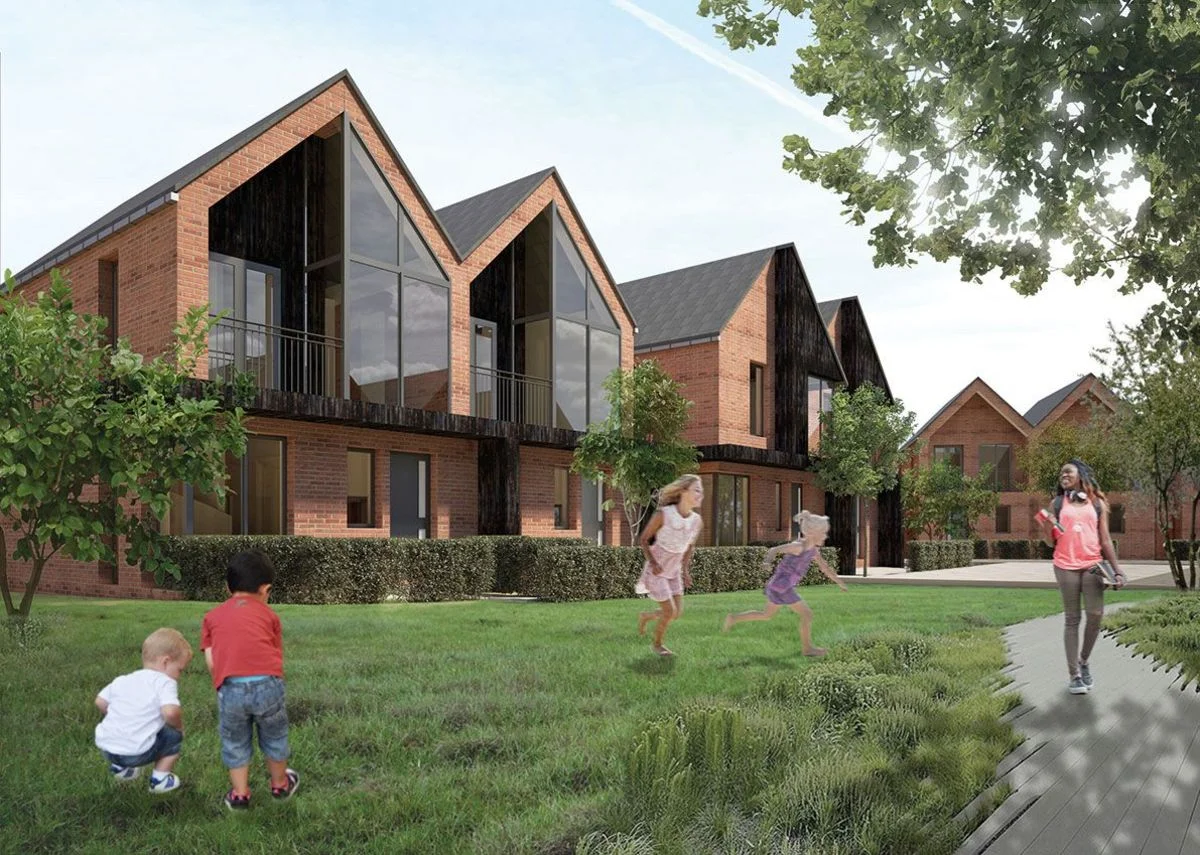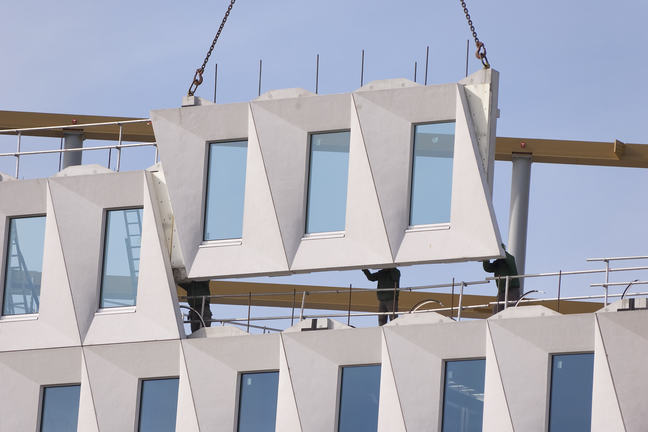Speaking at the RIBA Rising Star Awards night on BAME representation in Architecture, and on our MyPart3 App.
RIBA J : Rising Star 2018
Tara has recently been named an RIBA Journal Rising Star of 2018.
Full RIBA Article below:
"Original thinker with a passion for helping others"
The panel was impressed with the way Tara Gbolade tackles issues in architecture. ‘She has done something different,’ said judge Ros Kerslake. Her MyPart3 App particularly impressed judge Steve Melville: ‘Original thinking is all there.’ Her understanding about what was missing for would-be architects at part 3 drove her to design this app in 2016, and to keep its links to building criteria and regulations current.
Gbolade is helping to address one of the big industry issues close to her heart: the inclusion of those from black, Asian and minority ethnic backgrounds. Her referee, architect Kristofer Adelaide, writes about Gbolade’s ‘passion’ to help others in this area. She is involved with the Paradigm Network, a vehicle to propel BAME individuals forward by building their connections within the group and beyond it with industry workshops, events, speed mentoring and building tours.
In practice she looks to create experiences that empower communities. Gbolade Design Studio has worked on private and affordable housing for housing associations and local authorities – always with the intention of transforming people’s quality of life.
What would you most like to improve about the industry?
I’d like to see architects become more entrepreneurial and representative of our society, using the full spectrum of our skills. Our traditional role is passive. As trained problem solvers, being entrepreneurial affords us adaptability and resilience. I’d also like to increase the BAME representation – more diversity creates a richer society, transforms people’s quality of life, and stimulates the economy.
What existing building or place would you most like to tackle?
Welwyn Garden City Library. It was the building that inspired me to become an architect. I chose to review it for a school art project and discussed how oppressing and imposing the heavy 70s brick building was; for me it conjured up neither excitement nor eagerness to learn. My art teacher asked me to change it, introduced me to Gaudi based on my response, and here I am today!
Speaking on The Business of Architecture
Here I sit down with Ryan Willard who I have a candid interview with on running practice and being Archipreneural in my approach to practice.
GDS in the Architects Journal
Gbolade Design studio have been featured in the Architects Journal!
Full article Here
RIBA J Rising Star 2018 Long-List
Our Co-founder, Tara Gbolade, has recently been long-listed for the prestigious RIBA Journal Rising Star Award 2018! Watch this space to see if she makes the shortlist!
Full RIBA article can be found here
Modern Methods of Construction cost saving potential...
MMC cost saving potential...
MMC (Modern Methods of Construction) is a broad ‘umbrella’ acronym that describes a variety of contemporary construction methods and processes including:
Off-site Construction, Modular Construction, Precision Manufactured Construction, Design for Manufacture and Assembly, Pre-Manufactured Value, Digital Construction, Smart Construction.
With these processes are design and construction outputs that assist and aid the enhanced delivery of building projects that include the use of: Panellised Walls/Floors, Bathroom Pods, Utility Pods, Pre-fabricated MEPH Riser components, Balcony modules, Kitchen modules.
Cost Saving Potential
Recent cost estimates suggest that, for medium-size residential schemes, MMC could be 10-20% more cost effective than traditional methods and can reduce the overall programmes by circa. 25% - 50%. Whilst this may be the case, the process of MMC use/implementation provides other considerations to take on board, especially when used in the residential market.
For Housing Associations and Local Authorities, the higher speeds of construction and quality associated with MMC use is of particular interest as more homes can be delivered to reduce affordable housing waiting lists, the impacts of cost inflation, interest payments, long-term maintenance costs and generate more rental income from programme savings. Private Sale developers don’t always need this benefit as they look to time their delivery and sales to maximise their profits, and avoid flooding the open market with over-supply. Private Rental Sale Clients, in the other hand, most definitely do want the added rental income that these programme savings bring.
For other markets serving societal needs such as Schools and Healthcare projects, the same applies as these critical public services can be delivered in less time than with traditional construction methods.
The short construction programmes will often present cost savings associated with Construction Prelims costs (e.g Crane and Plant hire, logistics, Welfare set-ups and labour costs associated) rather than actual unit build & component costs, which are currently transferred to the offsite factory manufacturing process. Recent data suggests prelim savings could be around 10-12%.
MMC Supply Chain
Currently the UK MMC Supply Chain is still in its infancy with regards to number of solution providers available. As this increases, alongside use of digital manufacturing in their construction factories, we should see unit build costs coming down. It should be noted that standardisation of building components from the supply-side and mass uptake from the demand-side is needed for these cost savings to materialise. It’s the economies of scale principles typically associated with product manufacturing that the construction industry needs to adopt. Repetition of standard components such as floor and wall panels, a standard bathroom pod design, MEP Service modules that stack, will positively impact the cost of a project and remove financial challenges often associated with bespoke project solutions.
De-risking Construction through Design for Manufacturing & Assembly (DfMA)
DFMA stands for Design for Manufacture and Assembly. It is the combination of two methodologies; Design for Manufacture, which means the design for ease of manufacture of the parts that will form a product, and Design for Assembly; the design of the product for ease of assembly.
Applied to construction, a well controlled, planned and managed design phase is critical for the benefits of an MMC project to be achieved off and on-site. Design information will need to solidified to a higher detail much earlier than under traditional procurement so factory manufactured components can be programmed into a production line slot and assembled with ease on site. This reduces on-site construction risk which typically results in delays, cost overruns on traditionally built projects. It should be highlighted that currently upfront design costs are typically much higher than traditional build to accommodate this higher level of detail being brought forward / earlier in the process. The benefits by way of cost savings from reduced design errors, clashes and re-work during construction, as well as increased and smoother build programmes should readily justify this upfront spend.
Image Credit: www.futurelearn.com
The Case for Public Authorities - Passivhaus
Let’s face it, Local Authorities (LA’s) and Housing Associations (HA’s) haven’t been seen as innovative when it comes to quality and provision of housing in the UK (with a few exceptions!). With slowness in responding to changing markets, a very real cost budget to meet, and the Section 106 requirement by the government, public housing have historically suffered as the ‘add-on’ to development, often also represented as such.
But, with councils like Camden, Norwich and Exeter, as well as HA’s like Hastoe leading the way with Passivhaus developments, could the face of public authority housing be changing?
Camden council’s Agar Grove estate is set to be the largest UK residential passivhaus project with over 500 dwellings (50% affordable and 50% market sale). Camden council believe that passivhaus design can reduce energy bills and cut carbon, thereby minimising the council’s cost of maintaining their heating systems for example. Hastoe (independent registered housing association) have recently provided 14 dwellings following a needs survey identifying a strong local need; describing passivhaus as “the common-sense approach to delivering low energy, healthy and comfortable buildings”. The above examples give an idea of the breadth of scales of development being pursued and implemented by public bodies.
In the last quarter of 2016/2017, housing associations completed approximately 8,080 homes (National Housing Federation), of this how many were passivhauses? I propose not even close to 5%. Yet, this is housing for the masses of families who struggle to make ends meet. Not only is the case strong for the residential end-user – reduced electricity bills, warm and healthy homes, the benefits to public bodies are just as, if not, far greater.
Public bodies are responsible for maintaining their property. They cant do this effectively when their tenants choose to pay their electricity bills over paying their rent – leading to rent arrears. In 2016, the average LA social rent in England was £87.81/week (20% higher than the year before (£85.89)). Last year, there were also 79,900 non-decent local authority owned dwellings across England, and while this is a reduction of 24% from the previous year, there is still clearly a long way to go. Poorly insulated and/or ventilated houses means energy bills are high. As energy bills keep rising, tenants pay this before they look to pay their rent. If they can’t pay their rent, they default, which brings us back to LA’s not having enough finances to maintain properties and develop new ones – vicious circle!
So, why should local authorities and housing associations choose Passivhaus?
Low Rent Arrears:
Many councils and HA’s have needed to raise their rents to account for the HA grants that
have been cut. This means residents need to pay ‘unaffordable’ affordable rent, which can
lead tenants into poverty. HA’s felt they could ease this poverty burden to the residents by
tackling fuel poverty. The creation of passivhaus developments means that tenants don’t fall into fuel poverty, and therefore poverty. For example, tenants in Hastoe HA pay £120/annum in their 3Bed house – this has stayed stead over the last 5 years.
Better / Happier Residents:
This links to LA/HA tenants in most cases having more disposable income due to the substantial reduction in energy bills. Council tenants have actually responded saying “for the first time in 5 years I’ve been able to take my kids on holiday due to the substantial reduction in heating bills” (Hastoe Council). This means the local economy is being stimulated by the additional disposable income.
Lower Maintenance Costs:
Linked to the better heating units installed in passivhauses, as well as the use of better quality materials, local bodies are called out to fix problem less. Reducing energy bills and thereby minimising the council’s cost of maintaining their heating systems.
So, HA’s and LA’s, worth a shot?
(blog image: Mae Architects, Agar Grove Passivhaus, London)
The Quality of Housing - Passivhaus
It’s coming to winter again and in a society where many are faced with the options of “heating or eating”, the political ‘food and fuel poverty’ debate rears its head. With fingers pointing towards welfare cuts, rising energy bills, and the impact of austerity (all valid points), are we missing a critical point? Are we focusing on issues outside our control, instead of focusing on what we can control?
As the highest energy performance standard, Passivhaus offers unrivalled added value. Passivhaus employs a fabric first approach, low space heating demand, simple form factor, and good solar aspect. Owing to our more extreme weather swings, the recent collaboration by SPERI (Sheffield Political Economy Research Institute) and the Department of Social Policy, confirmed that low income households in the UK struggle to sufficiently eat, and heat their homes.
In 2016, the UK completed approximately 182,000 thousand homes (NHBC Homes Statistics), of which around 24% where for housing associations (National Housing Federation) and with 7of12 UK regions experiencing growth in housing supply, that equates to at least 200,000 families, with sub-standard housing quality. We as consumers, residents, community, need to start asking for Passivhaus as the baseline for any new construction, and as a minimum, any refurbished works.
For many, cold weather shocks directly translate to adverse income shocks (Institute for Fiscal Studies), and with the average UK household energy bills ranging anywhere from £700 to £1500 per annum, isn’t it time we reviewed how we can live better lives? The average energy cost of a Passivhaus can come to £70 per annum – and in some cases, much less. The difference is staggering and can make a real difference to the quality of life, not just financially, but with improved health and comfort.
With the cost of Passivhaus’ now coming closer to the cost of current construction, is this not the time local government, private developers (small and large), housing associations make this the baseline requirement?
Building.co.uk heralded Passivhaus as the ‘the future’ as far back as 2009, yet, demand is still slow. With market drivers such as location, price and availability at the top of our housing need, energy efficiency just doesn’t make the cut. So, while our European neighbours bask in the glory of low energy bills, better quality housing, perhaps now is the time we start to take a stand and demand quality housing. Shall we start asking, “What about us?”
Modular Construction + Passivhaus
The rise in use of modular construction to achieve high standards of thermal efficiency has been well documented, so using modern method of construction (MMC) to achieve passivhaus standards is inevitable.
Whether volumetric (modular construction), panelised, or hybrid systems, our housing ‘crisis’ means we have a real opportunity to utilise the twin-benefits of passivhaus and MMC. We can not only provide better quality homes, but faster, and with far more precision off-site, and far less cost on-site.
Advantages of MMC:
The main advantages of MMC focus on time, quality, and waste. MMC modules (2.8x4M) can be installed on site at a rate of 6-8no/day – that’s up to 4no. flats/day! Compared with traditional build, it can take up to 50% less time from commencement on site to occupancy.
The room for error, or inconsistent construction quality on site is also significantly reduced as the quality-controlled manufacturing process and tests undertaken prior to leaving the factory floor are stringent.
Finally, the vast reduction in waste poses a great advantage with MMC being up to 70% less wasteful when compared to traditional builds for volumetric (modular) construction.
It is important to note that the less ‘complete’ a modular system is before leaving the factory (i.e: open panel system), the more likely it is to be wrought with issues on site – from poor workmanship to increased waste.
Advantages of Passivhaus:
From excellent thermal standards to unrivalled air quality and significantly reduced running costs, these have been well documented on some of our previous blogs here.
In a time where urban and rural dwellers alike are looking for a ‘better’ way of living with rising energy costs and unfortunately still poor labour quality, a combination of Passivhaus and modular construction in its various forms, allows us to control the quality of the end product and provide a building that the end user is glad to call home!
Eradicating fuel poverty through Retrofits
The definition...In the UK, a household is considered to be in fuel poverty if its energy bills are disproportionately high when compared to its residual income (Low Income High Costs Indicator). Closely related to this is the sometimes poor standard of housing accommodation which causes residents to consume large amounts of energy to heat their homes.
The scale of the problem…Nationally, out of approx.27.2million UK households, it is estimated that 4 million households are living ‘Fuel poor’. That’s a staggering 15% of our existing stock and there are suggestions from industry experts that the current figure could be even higher.
Whilst I’ve personally not had the unfortunate situation of being directly impacted by this, I have experienced living in poor quality (energy efficiency) rented housing during my student days. The experience stuck with me, and as an architect-developer I’m keen to use my skills to find creative solutions to address this problem.
Some of the causes…
Poorly designed, constructed and insulated existing stock of housing built 25+ years ago still in use and not refurbished to high standards.
Rising Fuel costs, housing cost increases (be it rent or purchase price), alongside wage increases below inflation leaves increasingly more households susceptible to fuel poverty vulnerability.
Sub-standard private rental properties neglected by Landlords.
To stay healthy in body, mind and spirit we need to stay warm and comfortable. Living cold homes can make vulnerable people ill and existing illnesses worse. This then places extra strain on the nation’s overstretched health and social care services. In the winter of 2016/2017 an estimated 34,300 deaths were recorded in England & Wales(*). Historic research has suggested that up to 30% of these can be attributed to people occupying cold homes. Something has to change.
A solution and its benefits…Good architectural design and construction can play a big part in alleviating fuel poverty.
Retrofitting our existing stock of housing is one key ways to bring these 4million homes out of fuel poverty. To retrofit a home essentially means making the home more energy efficient and healthier by adding to or upgrading its existing features/components to a higher energy performance standard that also reduces energy running costs.
I see retrofits as the only viable way for homeowners/households to gain control and shelter their energy bills against significant future prices rises. Measures such as loft, floor and wall insulation, energy efficient heating, water, radiator systems and double/triple glazing are all simple ways to improving the energy performance of existing homes. Take a look at EnerPHit for more insight on this and get in touch if you’d like to share more thoughts on this.
Image credit: Third Force News
A thought piece by Lanre.








